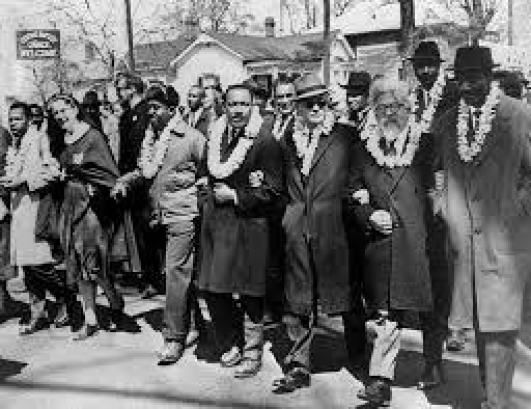Report from the Israel Movement for Reform and Progressive Judaism (IMPJ) on the Promotion of Jewish-Arab Relations in Israel and Programing Initiatives in the Field
Presented to the Israel Committee of the Central Conference of American Rabbis (CCAR)
Since its establishment, the State of Israel has struggled to balance between its commitment to being the homeland of the Jewish people and its commitment to universal democratic values. One of the greatest challenges in this realm has been the social, political and economic attitudes towards Israel’s largest minority group – Arab Israelis. Historical circumstances have created a reality of unusual tension between Israel’s Jewish majority and its Arab minority. This tension has consequently caused an unfortunate reality of deep inequality towards the Arab minority, and perhaps even worse, a great sense of animosity, often leading to acts of violence.
The IMPJ, guided by pluralistic Jewish values of social justice and Tikkun Olam, is committed to ensuring dignity and equality for all Israelis, as well as working towards the creation of a more tolerant, peaceful Israeli society. In light of the recent escalation in the already-tense relationship between Jews and Arabs in Israel, this year (2015), the IMPJ decided to place the promotion of a shared society and the battle against racism as one of its top five missions.
To do so, the IMPJ has begun operating on a number of levels, from community, educational and policy levels.
The “Meeting Neighbors” program: The “Meeting Neighbors” Jewish-Arab families program is a six month-long program bringing together Reform Kehillot and Arab communities. Jewish and Arab Israeli families from each community are linked in partnership for joint, regular encounters. Throughout six one-monthly sessions, the participants of the group discuss current topics of mutual interest through professionally facilitated discussions, visit cultural sites and the homes of their partner families. The meeting site of each session alternates between the Arab and Reform Jewish communities. The long-term character of the program facilitates the development of genuine relationships on both a collective and family-to-family basis. By doing so, the participants break cultural barriers and overcome long-held stereotypes about each other, which enables them to develop a level of familiarity and closeness. The Jewish and Arab localities are located in close proximity to one another. At the end of the six sessions, a final celebratory session takes place, organized by the participants. This program is based on a pilot program which took place three years ago and proved very successful. The first pair of communities, Kehillat Yozma in Modi’in and the city of Jaljulya involved six families from each side. The greatest measurement of success has been the continued strong relationships by the paired families, long after the official program had ended. This year, three addition Reform Kehillot and three paired Arab communities are participating in the program. These are: Kehillat Beit HaShita with the village of Mukebleh; Kehillat Megiddo with the town Ein Iron; and Kehillat Hararit with the city of Sachnin.
“Adabrah-na Shalom – And I Shall Speak the Word of Peace” curriculum program: As part of the effort to promote a more tolerant society in Israel, the IMPJ education department has developed a unique curriculum program on the promotion of a shared society and combating racism. Viewing youth as the most vulnerable and at the same time most inclined towards racist attitudes, this curriculum program is tailored to Jewish Israeli students between the 9th and 12th grades. Through Jewish and Israeli ancient and modern texts and liturgy, this curriculum surveys the history of the treatment of the “other” in Judaism. Texts are used as a tool to examine social phenomena and engage the students in questions surrounding this topic. The Adabrah-na Shalom curriculum is distributed to over 100 Israeli public schools with whom the IMPJ education department has regular relations, therefore reaching thousands of students all across the country. The inclusion of pluralistic Jewish texts provides a new lens through which the students learn about and examine this sensitive topic. The curriculum was written by a leading Israeli Reform rabbi with the help of educators from a variety of fields.
In early July, the IMPJ education department held its first-ever conference on the promotion of a shared society and battling racism at Neveh Shalom, a village known for its work in peace activism. The conference was considered very successful and was attended by over 70 Israeli educators teaching in a variety of frameworks.
Fighting racist incitement: The Israel Religious Action Center (IRAC), the legal and public advocacy arm of the IMPJ, works tirelessly to combat racial prejudice and incitement on the Israeli street, in government offices and wherever else it takes place. By bringing attention to instances of inequality, prejudice and racism through reports, public advocacy in the Knesset and protest on the street, IRAC makes it hard for Israeli leaders and lawmakers to turn a blind eye against injustices that are in our midst. Its most recent report, IRAC surveys incidents of racial incitement in social media, bringing truth to bear on this growing phenomenon.
The IMPJ is committed to continuing to promote an equal, democratic Israel based on pluralistic Jewish values and in light of vision of the Prophets of Israel. We know that our fellow rabbis in North America shared this vision. We invite you to be our partners in leading the way.


















